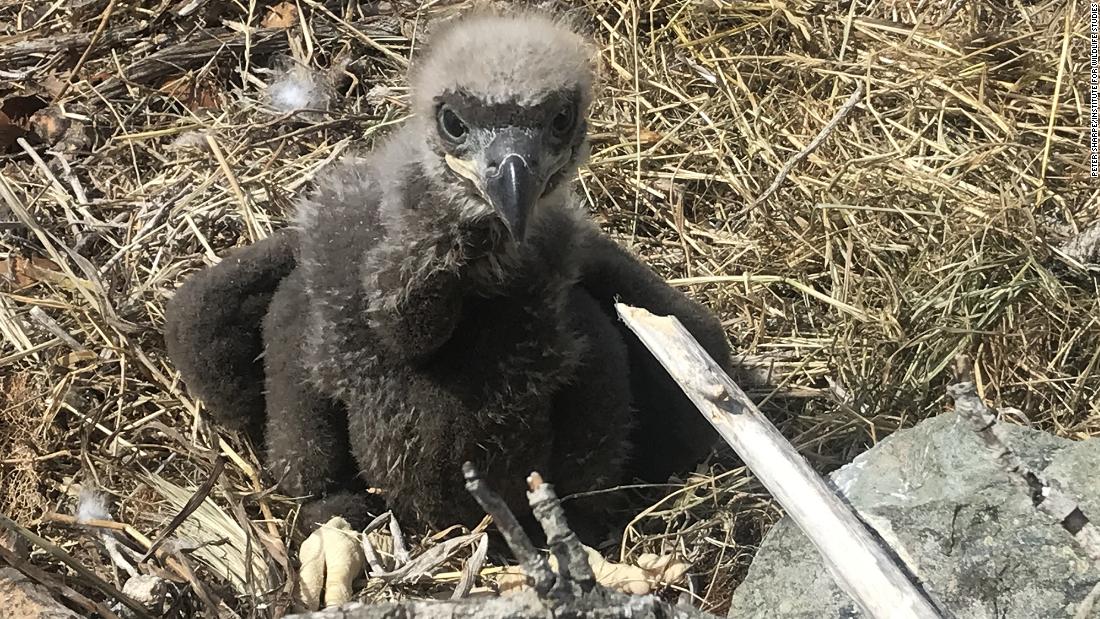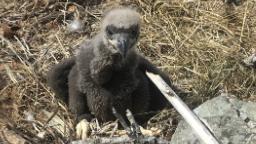

The eaglet fell between 10 and 15 feet and landed in a steep gully, Sharpe said. The nest is monitored with a video camera that captured the fuzzy youngster’s dramatic fall.
Luckily, the baby doesn’t seem to have suffered any harm from its fall. The chick “doesn’t seem injured,” said Sharpe, and it has “been eating well and sleeping well.” The 3-week old chick was hatched April 6.
This isn’t the first time Sharpe’s job has required him to rescue a baby eagle. Just last week, the ecologist returned another fallen eaglet to its nest, he said.
Bald eagles start to fly between 10 and 12 weeks old, Sharpe said, then usually spend another month with their parents before becoming fully independent. Once they learn to fly, he said, they face threats beyond falls from the nest: cars, power lines, shooting and lead poisoning from scavenging carcasses shot with lead.
“They’re part of a restoration project that’s been going on for over 40 years,” he said. “A lot of effort’s been put into restoring the eagles. The loss of one chick in a season can have quite a big impact. We’re just trying to maximize the number of chicks that reach maturity.”
Sharpe will return to the nest in two to three weeks to put an identifying band on the eaglet’s leg, take its measurements and estimate its sex, he said.